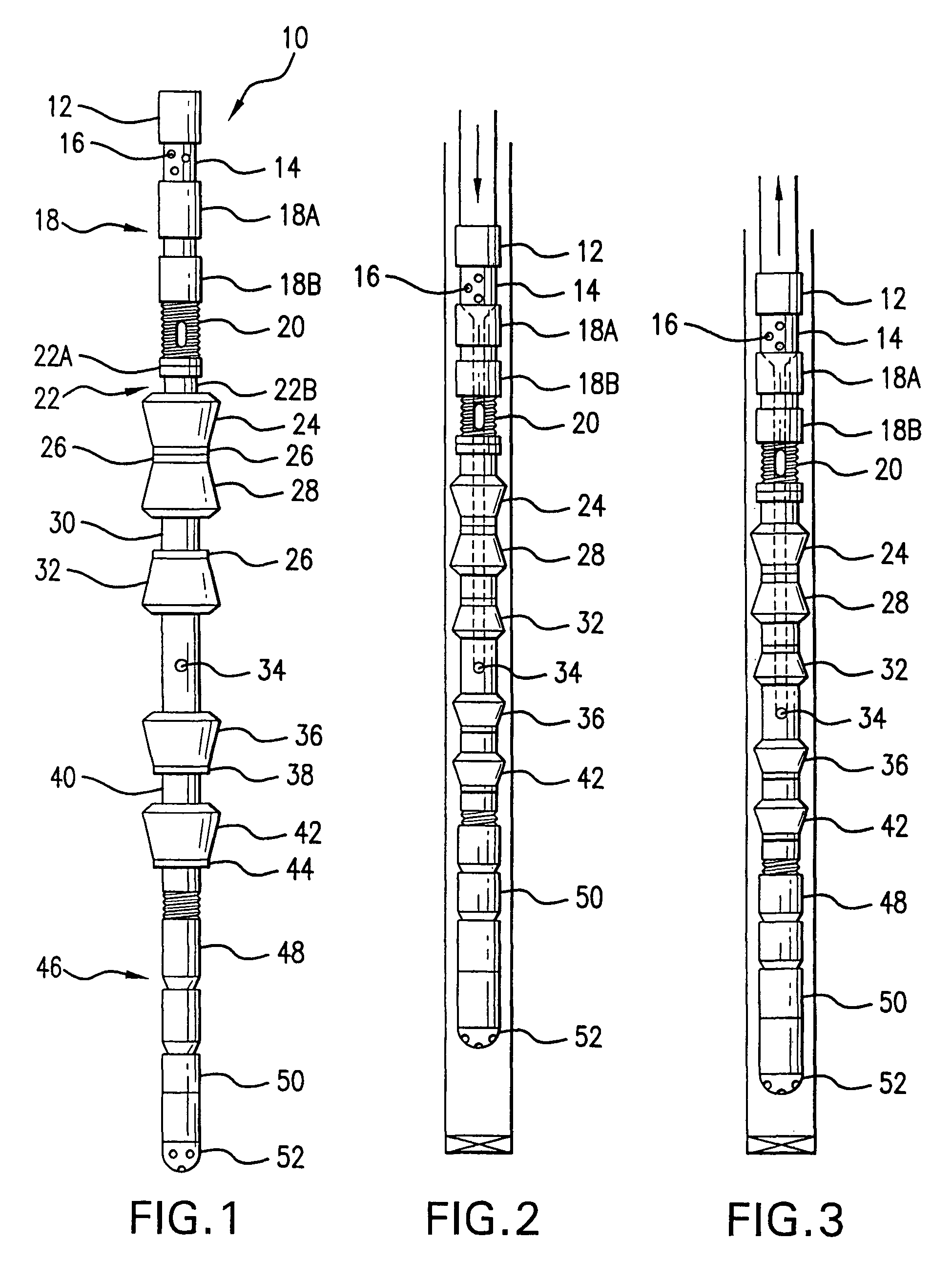Oil well cleaning compositions
a technology of oil wells and compositions, applied in the direction of fluid removal, wellbore/well accessories, chemistry apparatus and processes, etc., can solve the problems of affecting the effectiveness and affecting the efficiency of well production, and requiring extensive well shutdown time, so as to increase the output flow of wells, increase the output flow, and increase the output flow
- Summary
- Abstract
- Description
- Claims
- Application Information
AI Technical Summary
Benefits of technology
Problems solved by technology
Method used
Image
Examples
example 1
Preparation of the Cleaning Emulsion Using the Following Ingredients
[0107]
gals / raw / %,Productblendby weightNorfox De-38 Modified Coconut Alkanolamide0.9372.63403Norfox NP4 Nonylphenokypoly Ethane0.19525.1425Chevron Shingle Oil Refined Mineral Oil0.20306.1482Versene Tetra Sodium Salt0.00422.00308Ashland Mineral Spirit (Mineral Spirits 7.5%5.674.13839Aromatic)Kerosene Red Dyed4532.84438Rig Wash Terpene, Florida Chemical4532.84438Conditioned Water4029.195Demulsifier cold temperature design0.08.00786Total Number of Gallons Per Blend137.09
The first five items listed above (detergent) were blended with one gallon of conditioned water in a 200 gallon container and then 5 gallons of kerosene were added to this blend and mixed thoroughly. There was then added five gallons of Rig Wash / terpene and the resultant material mixed continuously; thereafter, additional Rig Wash / terpene and kerosene were added equally until an emulsion was formed. Once the initial emulsion was formed, then the remainde...
example 2
Treating Oil Wells with the Emulsion
[0109]Using the procedure set forth in Example 1, ten batches of emulsion / fluid were prepared and used to treat ten individual partially / fully plugged oil wells in Wyoming and South Dakota and at ambient temperatures ranging from −17 F to 47 F.
[0110]In each case, the emulsion / fluid from the 200 gallon tank was pumped into the well bore through the annuli thereof. After the emulsion was pumped from the tank into the well bore at a pressure to overcome the well bore pressure, the well was then shut-in and allowed to soak for 3 days before placing on circulation for 24 hours by using the pumping unit on location. Each well was placed back in operation / production. The average production increase was 41 barrels per day / 10 wells or an average of 4.1 barrel increase / day / well.
example 3
Treating Oil Wells with the Emulsion in Combination with Surge / Pressure Wash Tool
[0111]Following the procedures set forth in Examples 1 and 2, another well was injected with 30 barrels of the emulsion. A surge / pressure wash tool was placed at the end of the tubing string and run into the well. Then an additional 100 barrels of emulsion fluid was allowed to gravity flow into the well through the annulus casing valve. The emulsion followed the wash tool down the well. When the wash tool reached the slotted liner or the perforated zone, the wash tool began to float indicating the well was still plugged. After 15 minutes, the wash tool reached the bottom of the well. Then it was moved up and down the length of the derrick (45 feet) thus promoting a suction in the upward movement of the wash tool, below the wash tool. The tubing string and wash tool on its own weight returned to the bottom of the well with the lowering of the rig's blocks and elevators holding the tubing string. This mov...
PUM
| Property | Measurement | Unit |
|---|---|---|
| pH | aaaaa | aaaaa |
| pressures | aaaaa | aaaaa |
| distance | aaaaa | aaaaa |
Abstract
Description
Claims
Application Information
 Login to View More
Login to View More - R&D
- Intellectual Property
- Life Sciences
- Materials
- Tech Scout
- Unparalleled Data Quality
- Higher Quality Content
- 60% Fewer Hallucinations
Browse by: Latest US Patents, China's latest patents, Technical Efficacy Thesaurus, Application Domain, Technology Topic, Popular Technical Reports.
© 2025 PatSnap. All rights reserved.Legal|Privacy policy|Modern Slavery Act Transparency Statement|Sitemap|About US| Contact US: help@patsnap.com


